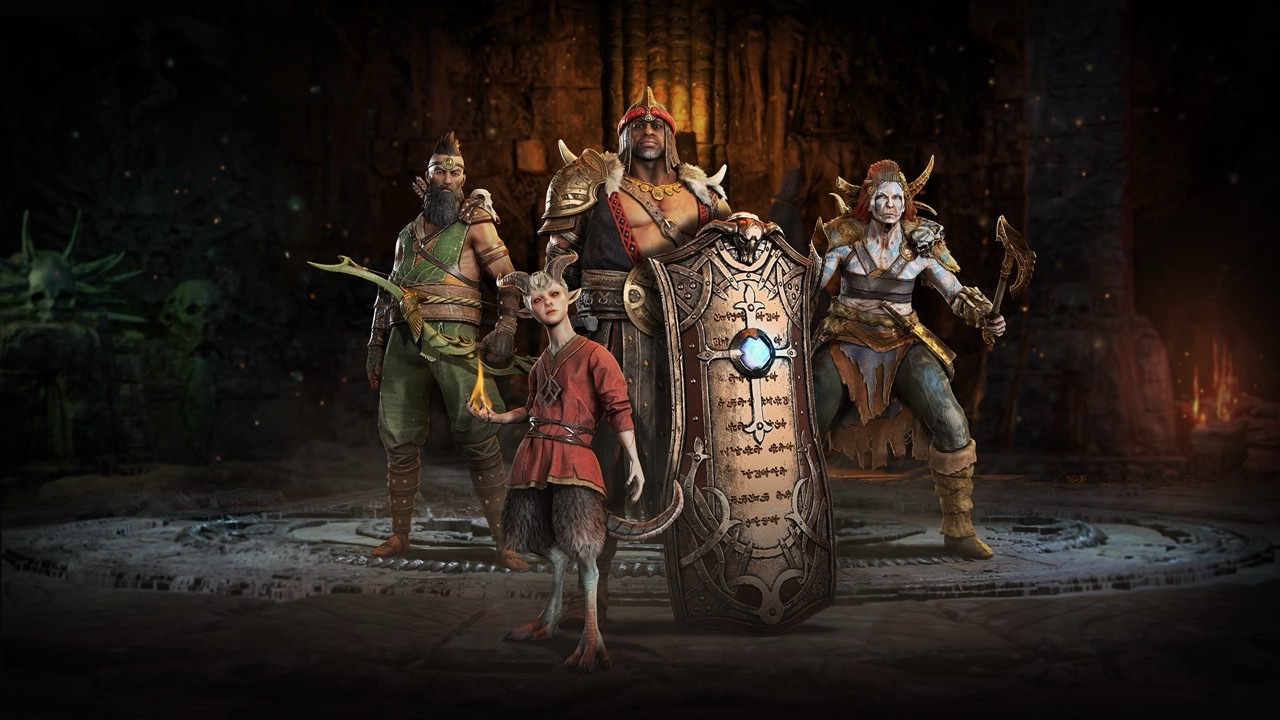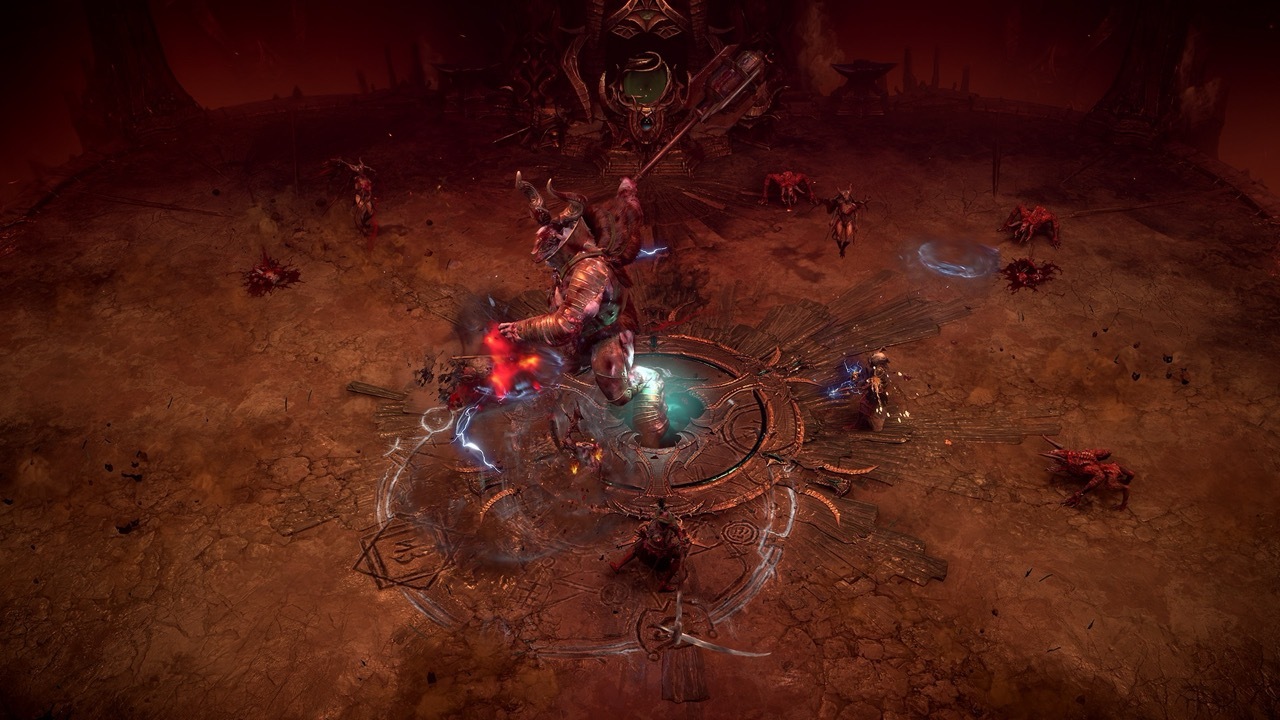Unlike the contentious launch of its predecessor, Diablo 4 arrived last year with a reasonably strong foundation that Blizzard has nurtured thoughtfully in the months since, giving its first expansion much less heavy lifting to do in the hearts and minds department. Diablo 4 doesn’t necessarily require an overhaul, but that’s what it feels like it’s getting next to its biggest content addition yet. That means you don’t have to own Vessel of Hatred to enjoy some of the most exciting changes arriving alongside it, but without it you would be missing out on the game’s most dynamic class yet, which makes Vessel of Hatred a blast to play.
If you’ve been away from Diablo 4 for sometime then you’ll be happy to know that Vessel of Hatred isn’t designed solely for those who have stayed engaged in demon-slaying since launch last year. If you want to hop right into the campaign of the expansion, you’re given the option to do so with a new character from the start, so long as you’ve completed at least the prologue in the base game. The updates since Diablo 4’s launch coupled with the sweeping changes made by a far-reaching update that goes live with the expansion enables this approach, making leveling substantially faster to get you to endgame activities by the end of Vessel of Hatred’s campaign. The changes to difficulty also remove any tedious grinding, letting you select your preferred difficulty and having all areas and enemies scale accordingly. These, along with more subtle changes to damage, health, and resource figures, as well as the lower level cap, all make Diablo 4 feel fresh again. That’s especially true if you haven’t been keeping up to date with it over the past year.
Vessel of Hatred’s story picks up after the events of Diablo 4, an indeterminate amount of time after Lilith’s defeat and the subsequent imprisonment of her father, Mephisto. Neyrelle, one of your core companions, has been shepherding Mephisto with her and bearing the brunt of his mind-twisting torture, venturing deep into the new region on Nahantu in search of a prison that might hold him. Meanwhile, the Cathedral of Light has its own crisis of faith thanks to a misguided campaign into hell and a new leader who is all about punishment over redemption, threatening its very existence in the wake of many of its followers perishing. This establishes a dual-antagonist threat, one with the Cathedral pursuing Neyrelle to pin its failures on, and the other with the growing power of the Prime Evil she’s carrying. Yet despite this, both of Vessel of Hatred’s main villains feature surprisingly little during its campaign, only manifesting once you’re ready to vanquish them. This stands in contrast to the persistent threat of Lilith in the main Diablo 4 campaign, whose presence was tangible as you raced across the region to put an end to her machinations.
Vessel of Hatred is a continuation of that story, but Lilith’s absence is profound. This isn’t helped by a large portion of the campaign acting as a crash course on background for the expansion’s new class, the Spiritborn. These ferocious warriors are able to tap into an entirely different realm of reality where the spirits of all beings, both past and present, reside, letting you draw on their power in order to protect this peaceful sanctum. There’s a lot of time spent on establishing this new lore and introducing key characters in its legacy, tying them into past events that are meant to give weight to the current conflict. But this comes at the expense of diminishing the higher-stakes conflict unfolding around you, relegating most of its progression to the last few moments of the campaign. It ultimately leads to an unsatisfying ending that requires a surprise twist that feels unearned, setting up the true conflict for the future just as the story finally starts becoming engrossing. It makes Vessel of Hatred feel like an awkward middle chapter to a larger story, being used to mop up loose ends from the first entry while setting up a finale and offering no meaningful story of its own to tell.
Thankfully, playing as a Spiritborn is anything but a letdown. This new class combines fast and fluid melee combat with the affinities of four different spirit animals: the Eagle, Jaguar, Gorilla, and Centipede. These boil down to different playstyles; Eagle attacks, for example, deal lightning damage and generally stack well with the Vulnerable debuff, while Centipede lets you spread vicious poison damage around groups of foes quickly before letting you burst them down with chained attacks. Initially it’s tempting to move through the skill tree focusing on just one affinity, leaning into pure Centipede or Jaguar builds. But once you start mixing them together, it’s easy to see just how malleable the Spiritborn really is, giving this class more depth than those that came before it.
Gallery
I initially found a lot of fun with the Centipede abilities, particularly ones that turned poison damage into an infection of sorts that would bounce between afflicted foes as they attacked or died. It reminded me a lot of the playstyle I adopted in my early time with Diablo 4’s Necromancer, where crowd control was key. Eventually my Spiritborn evolved into using a build that removed Centipede skills entirely and settled on a mix of abilities from Eagle, Jaguar, and Gorilla. Each provided a key pillar to the build, with Eagle’s devastating quill attacks forming the foundation of damage dealing, Jaguar’s attack-speed buffs letting me deal that damage incredibly quickly, and Gorilla’s defensive skill keeping me both alive and free of any debuffs.
This, in combination with an evasion skill that sometimes seemed like it was doing more damage than anything else, resulted in a fast-moving Spiritborn who could turn large groups of enemies into nothing almost instantly, and held its own in the expansion’s many (and delightfully mechanically-varied) boss fights. But I still feel like this is just the tip of the iceberg. There’s already a few other entirely new variations I’m excited to try, especially some that work well by leveraging specific gear that can make even basic-attack builds viable again. If you aren’t too concerned with Diablo 4’s ongoing story and hope that the new class is enough to justify Vessel of Hatred alone, the Spiritborn does so in spades.
Vessel of Hatred benefits from the many changes that will be free to all Diablo 4 players, especially with regards to how the game has changed to better support single-player. The new difficulty settings that replace the original World Tiers even out progression throughout the entire game to remove some frustrating progression hurdles, while the speed of character leveling has been increased to a more satisfying pace.

Gallery
What is exclusive to the expansion, however, is the addition of Mercenaries. After unlocking each one through a small introductory mission, these NPCs will follow you into battle when venturing out alone, bringing distinct abilities to complement your own. You can choose from mercenaries that soak up damage for you and counter potentially fatal damage by crowd-controlling enemies, or choose a more direct damage-dealer to pile on the pressure with you. If you’re not playing with other players, you can select a mercenary to venture at your side as well as a second, supporting one (called a reinforcement) who only jumps in when you specify actions. Once you’re in a party with other people, you still retain the use of your reinforcement, making your individual mercenary progression matter to a degree irrespective of how you plan to enjoy playing Diablo 4. Their inclusion is more profound, however, when playing alone, and mimics the dynamics of a real party closely to add another aspect of combat to think about.
In addition to the Spiritborn class and the new region of Nahantu (which measures around the same size of as a single region from the base game), Vessel of Hatred introduces two new ways to rapidly level up your character and engage in new twists on the established dungeon-crawling formula. The first is the Kurast Undercity, which has shades of the Nephalem Rifts introduced in Diablo 3’s Reaper of Souls expansion. Each venture into the Undercity is a new run with randomly generated enemies strewn across one of these locales, with each one featuring three floors you need to clear before taking on a boss. The twist here is that each run is time-limited. You’re initially given just 100 seconds to play with, with your run ending once the timer expires. Various enemies on each floor can help you extend that time, encouraging you not only to pick targets carefully but also focus on quickly dealing lots of damage. Optional objectives on each floor also contribute to the level of rewards you’ll receive on completion, forcing you to balance your time between progressing through each floor and taking risks to increase your bounty at the end.
This combines into a highly rewarding and engrossing experience, distilling the thrills of clearing a dungeon in a condensed, adrenaline-fueled skirmish. Even when a run didn’t go my way, I never felt cheated of my time, especially since loot is rewarded even on failed attempts. As you progress through Vessel of Hatred, you’ll obtain items that let you increase the difficulty and add combat modifiers to earn specific types of loot, providing a feeling of freshness while also giving you another outlet for productive grinding.

Gallery
The second is the Dark Citadel, a new raid-like activity that provides a weekly incentive to return and attempt some of the hardest challenges Diablo 4 offers. Available only once you’ve unlocked Torment I, the Dark Citadel isn’t necessarily something you’ll encounter unless you’re the type of player who is invested in spending a lot of time honing your character over hours and hours once you’ve hit the level cap. It’s understandable why this is the case, given that The Dark Citadel is meant to challenge your fundamental understanding of both your build and that of other players, but it’s still a pity that it’ll likely be an aspect of the expansion that many players don’t get to experience as a result.
This event is split up into three distinct dungeons, with each wing of the citadel featuring various floors of enemies to clear and light puzzles to solve. The dungeons, which require 2-4 players to cooperate through, routinely split players up to achieve objectives independently that determines your progression as a team, meaning each member needs to be able to carry their weight. Boss battles at the end of each wing accentuate this, with these multi-stage skirmishes requiring you to figure out their various puzzle elements and then execute on the solutions with both speed and precision. It’s a true test of your understanding of both your character build and how it synergizes with the rest of your party, and is a fine addition to the existing endgame content that has evolved positively since the original release of Diablo 4.
Vessel of Hatred acts as a great reentry point for lapsed Diablo 4 players looking for another fix of the dungeon-crawling action that the original release so deftly introduced. The Spiritborn class is as satisfying to command in skirmishes as it is to experiment with, featuring a level of depth that extends beyond all classes before it. Both the Kurast Undercity and the Dark Citadel are captivating additions to the existing (and drastically improved) endgame conten. The expansion is only let down by a middling story that fails to captivate on the setup of the base game and ends with nothing more than a tease for the presumably real conflict to come. Irrespective of that, Diablo 4 didn’t need an expansion to uplift it, but Vessel of Hatred certainly delivers on making the entire thing feel fresh again.
